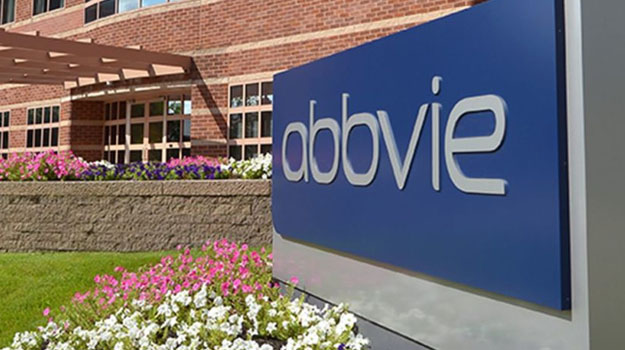Q&A with Alan Koncarevic, PhD, Director of Industry Relations in the Polsky Center at University of Chicago
With a career spanning both academia and industry, Koncarevic is perfectly suited for his role building strategic corporate partnerships. Pharma’s newfound focus on external R&D is part of a general recognition that some pretty amazing science is happening outside their walls. From University of Chicago’s latest multi-year deal with AbbVie to finding the next big fish, Koncarevic discusses how to turn joint collaborations into product innovation and commercial success.
Tell us about your role at Polsky…
Our mission at Polsky is to enable our UChicago community to bridge the gap between idea and impact. This can take a number of different forms. One is through mutually beneficial strategic partnerships with industry, and that’s what I’m responsible for. To ensure long-term success, we also provide professional partnership enablement, the equivalent of alliance management in industry.

How do your industry partnerships typically come together?
There are a number of ways. We look at some of the engagements our researchers already have with industry where there might be sufficient activity in place within a single area. We look at the strategic areas of interest of companies and how they might be complementary to our own internal expertise and resources. We also simply make an effort to stay aware of the partnering activities of pharma companies with other academic institutions, which shows they’re open to larger partnering opportunities with academia. They can also come through clinical trial activities, talent exchanges and engagements between our startups and the venture arms of companies.
You recently helped put together a broader partnership with AbbVie. Can you speak about what that partnership is and how that came about?
The partnership with AbbVie is a multi-year, strategic research partnership currently focused on oncology. It came together because there were already numerous complementary areas of expertise and resources, and we had a history of productive one-off research partnerships with Abbvie. There was geographical proximity, and we had common interest in promoting the local research ecosystem. We also share a passion for transformational discoveries in the field of oncology.
There was geographical proximity, and we had common interest in promoting the local research ecosystem. We also share a passion for transformational discoveries in the field of oncology.
What would be your advice to other universities looking to partner with industry?
I would suggest looking at what companies are in your backyard that, based on their interests and your areas of expertise, there would be a natural fit worth exploring. Also, leveraging existing relationships on your team and relationships that the researchers may have. Lastly, working with your alumni base. For University of Chicago it’s been a huge source of experts and connectivity in general.
What are some trends you’re seeing in external innovation?
There has been a trend over the past ten plus years where pharma companies have been conducting outreach with academic institutions at earlier stages when traditionally they would wait for intellectual property they could license. The model has shifted to earlier, pre-IP collaborative research engagements so pharma companies can have even earlier access to discoveries that come out of universities, and then contribute to those efforts in a collaborative manner.
The model has shifted to earlier, pre-IP collaborative research engagements so pharma companies can have even earlier access to discoveries that come out of universities, and then contribute to those efforts in a collaborative manner.
Another trend is co-location. That’s been happening more and more on the coasts and we believe there’s a great opportunity in Chicago to build an ecosystem and create co-location opportunities here.
In terms of opportunities, we have seen more interest in cross-disciplinary areas and pharmaceutical companies thinking about how developments in computation, big data, analytics, artificial intelligence and beyond will transform the entire pharma industry, from how drugs are discovered and developed all the way through to how they are marketed.
In terms of co-location, how does that work logistically?
The larger opportunity we believe is around researchers and other relevant stakeholders from industry coming to innovation centers affiliated with universities. We are working on such an initiative to create something like LabCentral in Kendall Square, but rather than just physical lab space, it would be an entire ecosystem with programming activities and networking opportunities for industry, investors and entrepreneurs that each bring a different type of expertise.


What is driving that trend for earlier-stage collaboration?
Pharma recognized more than a decade ago that their internal R&D efforts were not as productive and efficient as one would hope. And that’s obvious if you think about it – the likelihood of a pharmaceutical company coming up with new ideas completely on their own versus the entire academic and entrepreneurial ecosystem globally is somewhat low.
Pharma recognized more than a decade ago that their internal R&D efforts were not as productive and efficient as one would hope.
Pharmaceutical companies are just much better positioned for later stages of the drug development process where academics are better positioned for earlier stages. Several pharmaceutical companies recognized this a while back and said we need to engage more actively with academic institutions rather than visit them once in a while. As the first few companies moved into earlier engagements, the others followed.
How do pharma companies typically evaluate opportunities with academia?
What’s likely important to them is a critical mass of complementary research and expertise to what they already have in-house. While pharma companies have been actively focusing on external R&D efforts, they are still maintaining certain levels of internal R&D activities. It’s about identifying synergies, focusing on what they are really good at, and partnering in the areas that academics are really good at.
They also seek out the best researchers working in prominent areas and see whether their institutions can support these partnerships, because they know that in order for these partnerships to be successful, it will require long-term enablement rather than just putting an agreement in place.
I’ve experienced this when I was on the other side of the table, where you come across a couple of top researchers where there is perfect alignment, but if the barriers to engagement are too high with the university, then the company may go look elsewhere.
If the barriers to engagement are too high with the university, then the company may go look elsewhere.
What are some examples of those barriers to engagement?
It’s really about having a progressive, well-structured tech transfer or industry partnership function at the university with a history of researchers engaging with external stakeholders. Some more specific things that often come up are contractual barriers pertaining to intellectual property, confidentiality, or overall operational efforts.
Most universities traditionally have not been set up for that and that’s why a number of companies felt it was really challenging to work with universities, even from a simple sourcing effort. Who do they contact at the university? Who do they work with to identify potential opportunities or structure agreements? They may get different answers from different people at a given academic institution.
Then from the university side, researchers have been traditionally hesitant to engage with industry without an appropriate facilitator at the university who can demystify the process and address questions about partnering with industry.
What is the net effect of universities charging overhead? Do they deter companies that otherwise would sponsor academic research?
There is a lot of misunderstanding and misconceptions about what university overhead is. That first needs to be clarified with potential industry partners so they understand they are not some artificial costs that the university adds into the budgeting. It’s actually the universities being transparent about different types of costs associated with doing business. Companies don’t show their indirect costs in most cases while academic institutions do. They are very real costs associated with facilities, enabling researchers and students and the overall underlying infrastructure.
There is a lot of misunderstanding and misconceptions about what university overhead is.
Companies have traditionally not been well-informed about this, but that’s been shifting just by having more communication with industry and the same is true with universities. We are becoming more informed about how companies are structured, incentivized and budgeted.
What would you tell a researcher who is actively trying to work with an industry partner and is getting feedback that it’s too early?
This comes up and why a number of academic institutions have set up innovation funds where researchers apply for funding to perform high-value proof of concept translational experiments that would then validate or attract additional interest from industry or investors.
In that context, feedback from industry is extremely valuable. Industry simply saying it’s too early is not helpful. What’s helpful is saying we would be interested in further exploring this if you demonstrated this or showed this type of data in this type of model. That’s why building relationships is so important because rarely does an investor or a company meet the researcher on day one and provide significant sources of funding on day two.









There is a significant gap between the translation research at the university and what works in industry. Even the simple notion of cGMP and cGLP is overlooked, but is critical for a meaningful transition.
Running a lab and project management in a company are quite different processes and need workshops to bridge this.